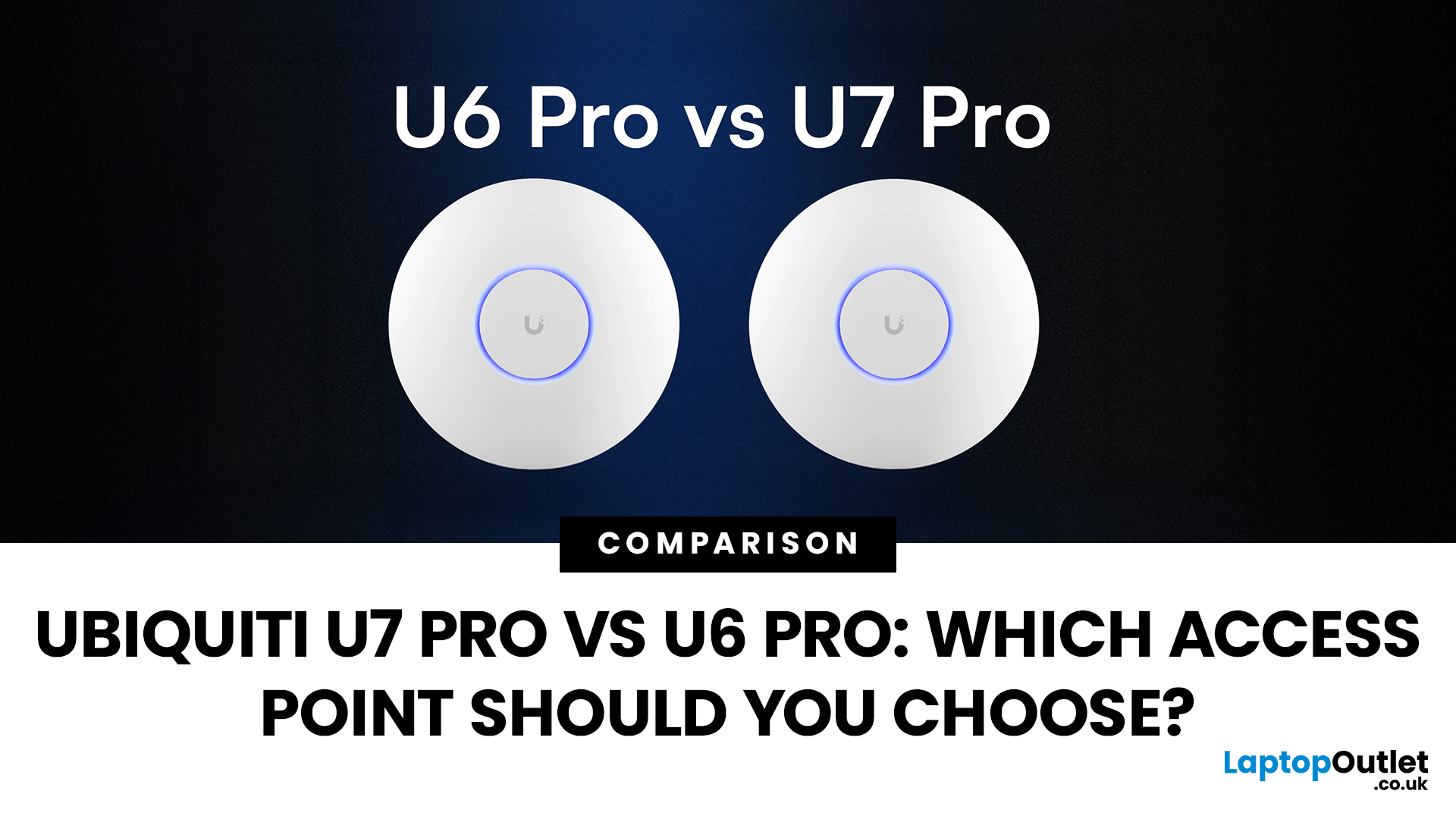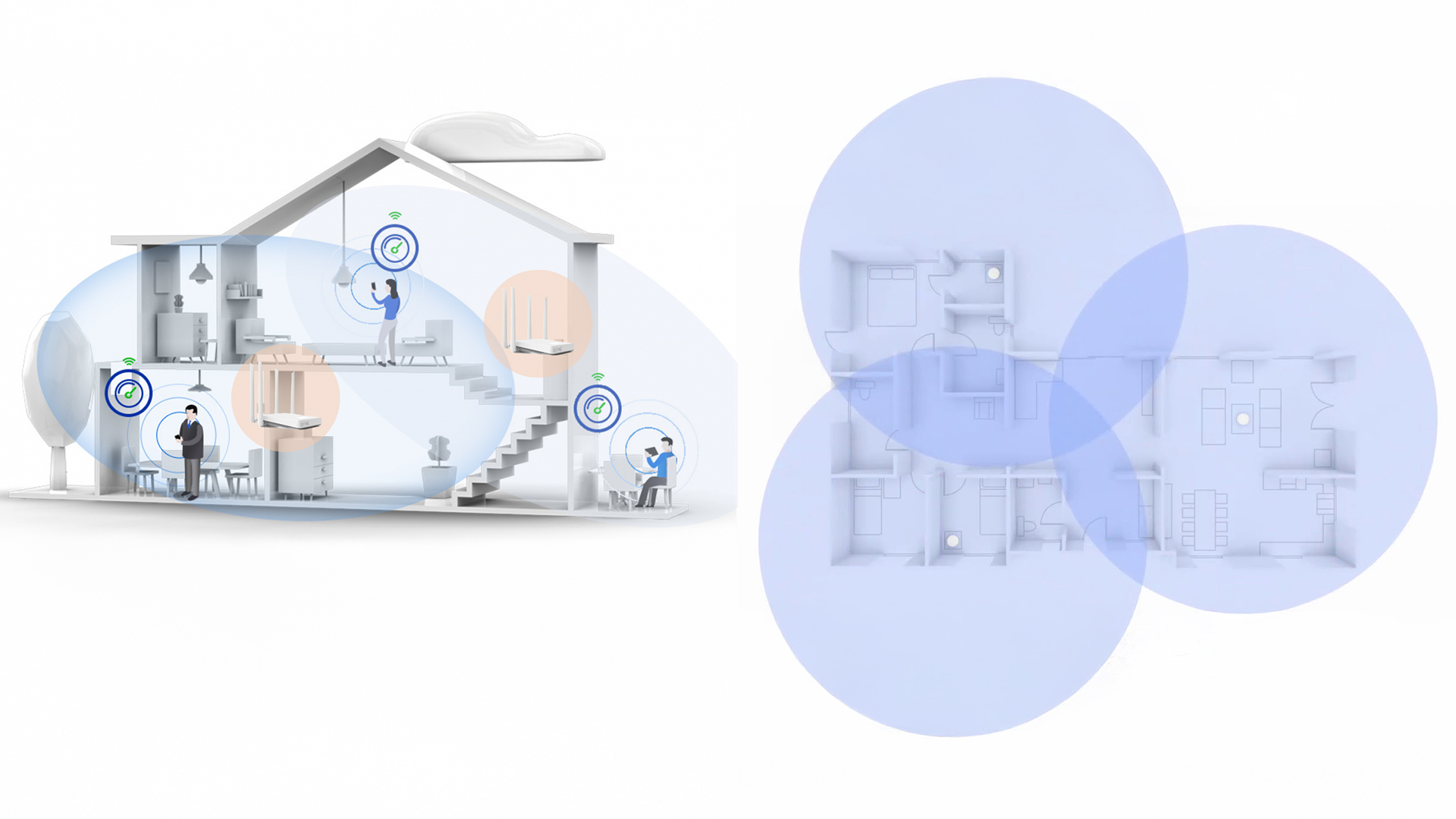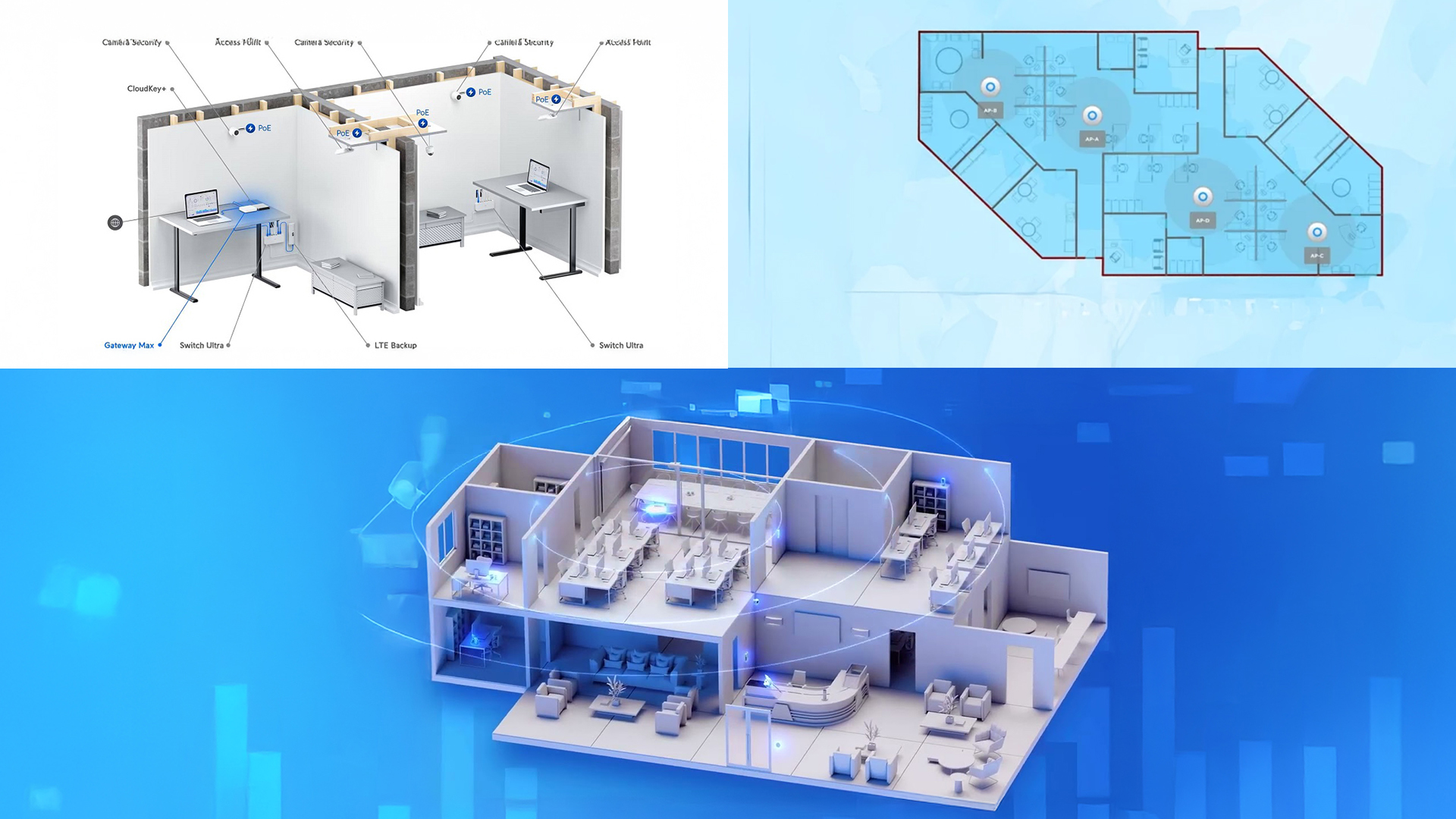Ubiquiti U7 Pro vs U6 Pro: Which Access Point Should You Choose?

Choosing the right access point can make or break your network performance. With more devices demanding faster speeds, lower latency, and reliable coverage, the hardware you select today shapes how future-proof your setup will be.
Ubiquiti’s UniFi U6 Pro has been a go-to choice for years, delivering strong WiFi 6 performance at an affordable price. But with the release of the UniFi U7 Pro, powered by the latest WiFi 7 standard, many users are now wondering whether it’s time to upgrade.
This comparison guide breaks down the Ubiquiti U7 Pro vs U6 Pro in detail, from speed and coverage to throughput, PoE support, and deployment scenarios. We’ll highlight where WiFi 7 makes a difference, and where the U6 Pro still holds its ground. By the end, you’ll know exactly which UniFi access point best fits your needs.
Quick Spec Overview: U6 Pro vs U7 Pro
The U6 Pro and U7 Pro sit back-to-back in Ubiquiti’s UniFi access point lineup. The U6 Pro delivers reliable WiFi 6 performance, while the U7 Pro introduces WiFi 7 technology for users looking to future-proof. Both are designed for prosumers, SMBs, and enterprise environments, but they cater to slightly different priorities.
Specification Snapshot
|
Feature |
||
|
WiFi Standard |
WiFi 6 (802.11ax) |
WiFi 7 (802.11be) |
|
Max Throughput |
~5.3 Gbps |
Higher (up to ~9.3 Gbps aggregate) |
|
Bands |
Dual-band (2.4 GHz + 5 GHz) |
Tri-band (2.4 GHz + 5 GHz + 6 GHz) |
|
PoE Support |
PoE+ (802.3at) |
PoE++ (802.3bt) |
|
MU-MIMO |
Supported |
Enhanced (more streams) |
|
Target Audience |
Cost-effective, reliable WiFi 6 |
Early adopters, high-density users |
Key Takeaways
- U6 Pro: Great balance of price and performance.
- U7 Pro: Designed for maximum throughput and WiFi 7 features.
- Both: Work seamlessly in UniFi Controller, making deployment easy.
If you need reliability today, the U6 Pro is strong. If you want to prepare for the next decade of WiFi, the U7 Pro leads.
WiFi 6 vs WiFi 7: What’s New?

Understanding the jump from WiFi 6 to WiFi 7 is key when comparing the U6 Pro and U7 Pro. While WiFi 6 introduced major efficiency upgrades, WiFi 7 pushes boundaries on speed, latency, and multi-device handling.
WiFi 6 (U6 Pro)
- OFDMA: Efficiently shares channels between multiple devices.
- MU-MIMO: Handles simultaneous streams better than WiFi 5.
- Target Wake Time: Improves battery life for IoT devices.
- Max Channels: Up to 160 MHz.
WiFi 7 (U7 Pro)
- 320 MHz Channels: Double the bandwidth of WiFi 6.
- Multi-Link Operation (MLO): Devices use multiple bands at once for faster speeds.
- Improved MU-MIMO: Supports more streams per band.
- Lower Latency: Essential for gaming, AR/VR, and video calls.
Side-by-Side: WiFi 6 vs WiFi 7
|
Feature |
WiFi 6 |
WiFi 7 |
|
Channel Width |
160 MHz |
320 MHz |
|
MU-MIMO |
8 streams |
16+ streams |
|
Latency |
Low |
Ultra-low |
|
Use Case |
Reliable everyday WiFi |
High-density, future-ready networks |
WiFi 7 isn’t just faster - it’s smarter at managing multiple demanding applications at once.
Performance & Throughput Comparison
Performance is often the deciding factor between the U6 Pro and U7 Pro. While both offer solid throughput, the U7 Pro benefits from WiFi 7’s expanded channels and efficiency.
U6 Pro Highlights
- Max Aggregate Throughput: ~5.3 Gbps.
- Dual-band design keeps things simple.
- Handles dozens of devices with ease in SMB or home settings.
U7 Pro Highlights
- Max Aggregate Throughput: ~9.3 Gbps (nearly double the U6 Pro).
- Tri-band support means more flexibility for device distribution.
- Lower latency thanks to Multi-Link Operation.
Performance Snapshot
|
Metric |
U6 Pro |
U7 Pro |
|
Max Speed |
5.3 Gbps |
9.3 Gbps |
|
Bands |
2 |
3 |
|
Latency Handling |
Good |
Excellent |
|
High-Density Environments |
Strong |
Outstanding |
Which One Fits You?
- Choose U6 Pro → Medium-sized offices, homes, and cost-conscious buyers.
- Choose U7 Pro → Large offices, high-device density, and power users.
If your network feels crowded with video calls, IoT, and streaming all at once, the U7 Pro’s throughput advantage will show immediately.
Coverage & User Capacity

Beyond speed, coverage and capacity determine how well an access point fits your environment. Both the U6 Pro and U7 Pro are designed for strong coverage, but the U7 Pro brings extra muscle for modern device-heavy spaces.
Coverage Comparison
- U6 Pro: Solid dual-band coverage for medium spaces. Works well in homes and SMB offices.
- U7 Pro: Extended coverage thanks to tri-band design and improved antenna efficiency. Best suited for open offices, schools, or large households.
Device Handling
- U6 Pro: Supports dozens of concurrent devices with MU-MIMO.
- U7 Pro: Handles hundreds more efficiently due to higher MU-MIMO streams and WiFi 7 improvements.
Use Cases
- U6 Pro: Small/medium businesses, home networks with moderate device counts.
- U7 Pro: High-density deployments, coworking spaces, universities, event venues.
Quick Recap
|
Feature |
U6 Pro |
U7 Pro |
|
Coverage |
Medium–large homes/offices |
Larger open spaces, campuses |
|
Device Capacity |
200+ (practical) |
400+ (optimised) |
|
Ideal For |
Reliable everyday networking |
Device-heavy, high-demand environments |
Think of U6 Pro as the reliable workhorse, and U7 Pro as the powerhouse built for the busiest networks.
PoE+ vs PoE++ Support
Power over Ethernet (PoE) is essential for UniFi access points, allowing them to receive both power and data through a single cable. The U6 Pro and U7 Pro differ here, and it can impact deployment planning.
U6 Pro (PoE+)
- Uses PoE+ (802.3at) standard.
- Power draw: ~13W under load.
- Compatible with most existing UniFi switches.
- Simple for SMB and home setups - plug and play.
U7 Pro (PoE++)
- Requires PoE++ (802.3bt) for stable operation.
- Power draw: ~20–22W under load (higher due to WiFi 7 radios).
- May need upgrading to newer PoE++-capable UniFi switches.
- Future-proof but with a higher upfront infrastructure cost.
Comparison Table
|
Feature |
U6 Pro |
U7 Pro |
|
PoE Standard |
PoE+ (802.3at) |
PoE++ (802.3bt) |
|
Typical Power Draw |
~13W |
~22W |
|
Switch Compatibility |
Widely supported |
Needs PoE++ switches |
If you already own PoE+ switches, the U6 Pro is easier. If you’re ready to upgrade your accessories for networking core, the U7 Pro makes sense.
Deployment Scenarios: Which One Should You Choose?

The best access point depends on your environment. Let’s look at how the U6 Pro and U7 Pro perform across different setups.
Home & Home Office
- U6 Pro: Excellent for streaming, gaming, and work-from-home setups. Affordable and efficient.
- U7 Pro: Overkill unless you have dozens of smart devices or are testing WiFi 7 laptops.
Small & Medium Businesses
- U6 Pro: Perfect for offices under ~50 employees. Stable WiFi 6 speeds cover everyday apps.
- U7 Pro: Ideal for growing SMBs that expect device counts to surge.
High-Density Environments
- U6 Pro: May struggle with very large crowds (schools, event halls).
- U7 Pro: Built for high-density scenarios with hundreds of concurrent devices.
Quick Guidance
|
Use Case |
Recommended Model |
Why |
|
Home / Small Office |
U6 Pro |
Balance of cost & performance |
|
Growing SMB |
U7 Pro |
Handles more users & WiFi 7 |
|
Enterprise / High Density |
U7 Pro |
Throughput + device handling |
If the budget is tight and needs are moderate, go U6. If growth and density are priorities, U7 wins.

Pros & Cons

No device is perfect. Here’s how the U6 Pro and U7 Pro stack up when it comes to strengths and weaknesses.
|
|
Pros |
Cons |
U6 Pro |
Affordable price. Lower power requirements (PoE+). Reliable WiFi 6 performance. Works with most existing UniFi networks. |
Limited to WiFi 6. Lower throughput than U7 Pro. May struggle in high-density areas. |
U7 Pro |
WiFi 7 support with blazing throughput. Handles high-density environments smoothly. Tri-band design improves performance. Future-proof for next-gen devices. |
Higher cost. Requires PoE++ switches (extra investment). Overkill for small/home setups today. |
In short: U6 Pro = smart value; U7 Pro = premium future-proofing.
Read How to Connect Netgear WiFi Extender.

The What, Why & Huh?
1. Is WiFi 7 backwards compatible with older devices?
Yes. WiFi 7 works with WiFi 6, 5, and even older devices, but only new hardware will benefit from WiFi 7 speeds.
2. Do I need PoE++ switches for the U7 Pro?
Yes. The U7 Pro requires PoE++ (802.3bt) for stable operation. U6 Pro works fine with PoE+ (802.3at).
3. How many devices can each access point handle?
- U6 Pro: Up to ~200 devices.
- U7 Pro: Optimised for 400+ concurrent devices.
4. Should home users upgrade to U7 Pro right now?
Not necessarily. Most homes won’t notice WiFi 7 benefits yet unless you have next-gen laptops or very high device counts.
5. Can I mix U6 and U7 in the same UniFi deployment?
Yes. UniFi Controller manages both models, so you can phase in U7 units gradually.

Wrapping It Up:
Choosing between the Ubiquiti U6 Pro and U7 Pro comes down to your current needs versus your future plans.
If you want affordable, reliable WiFi today, the U6 Pro is the safe bet. It delivers excellent WiFi 6 performance, works with most UniFi switches, and requires no major infrastructure upgrades.
If you want to future-proof for WiFi 7 and support dense, demanding environments, the U7 Pro is worth the investment. It delivers higher throughput, tri-band performance, and ultra-low latency.
